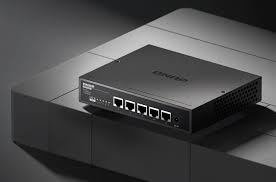NEC technology reliably measures sea levels from a greater distance
NEC Corporation has developed a technology for
measuring sea levels with high accuracy from greater distances using 3D Light
Detection And Ranging (LiDAR), a remote sensing technology. This technology
makes it possible to reliably measure sea levels, even in the event of a
tsunami or ground movement at the location where the measuring equipment is
installed.
In June 2024, NEC conducted a demonstration test
of this technology in Tokyo Bay and confirmed that it can measure sea levels
with high accuracy from a greater distance than conventional technologies.
In the event of a tsunami caused by an earthquake, volcanic
eruption, or other phenomenon, immediate and accurate assessment of changes in
sea levels is critical to saving lives.
Current radio wave and float-type sea level
measurement systems have a measurement range of about 20 meters from the
surface of the sea. However, if ground movement occurs due to an earthquake or
other phenomenon, it becomes difficult to measure sea levels. In fact, ground
movement due to a major earthquake that occurred on the Noto Peninsula of Japan
in January 2024 disabled measurement equipment along part of the coastline,
resulting in a delay before reliable measurements could be resumed.
New
Technology
This new technology delivers 3D-LiDAR infrared laser beams to
buoys floating on the sea, and reflected light is used to measure the distance.
This ultra-sensitive optical reception is accomplished using long-range
3D-LiDAR with advanced long-range, large-capacity optical transmission and
reception technology (coherent reception technology), making it possible to obtain
the 3D point cloud data of objects from greater distances. As a result, this is
the first time that sea levels have been successfully measured from a distance
of 60 meters from the sea with an error of about 2cm.
In addition, a 3D water level measurement
technology has been developed that clusters processing of the acquired 3D point
cloud data, classifies the shape of buoys and surrounding topography with high
precision, and then compares the information to correct the position and
estimate the height of buoys. This makes it possible to measure from a variety
of locations and angles, meaning that 3D-LiDAR equipment can be installed in a
wider variety of locations.
As a result, tide stations may be installed in locations
along the coastline that are less susceptible to significant ground movement,
making the system disaster-resistant and enabling continuous monitoring of sea
levels. In addition, the equipment is portable and may be flexibly installed
across a wide range of locations, helping to reduce installation costs and time.
Going forward, NEC plans to continue developing this
technology, including extending the measurable distance to several hundred
meters and improving measurement accuracy by comparing 3D-LiDAR data with map
information of the surrounding area, aiming for practical application by the
end of FY2025.


































Leave A Comment